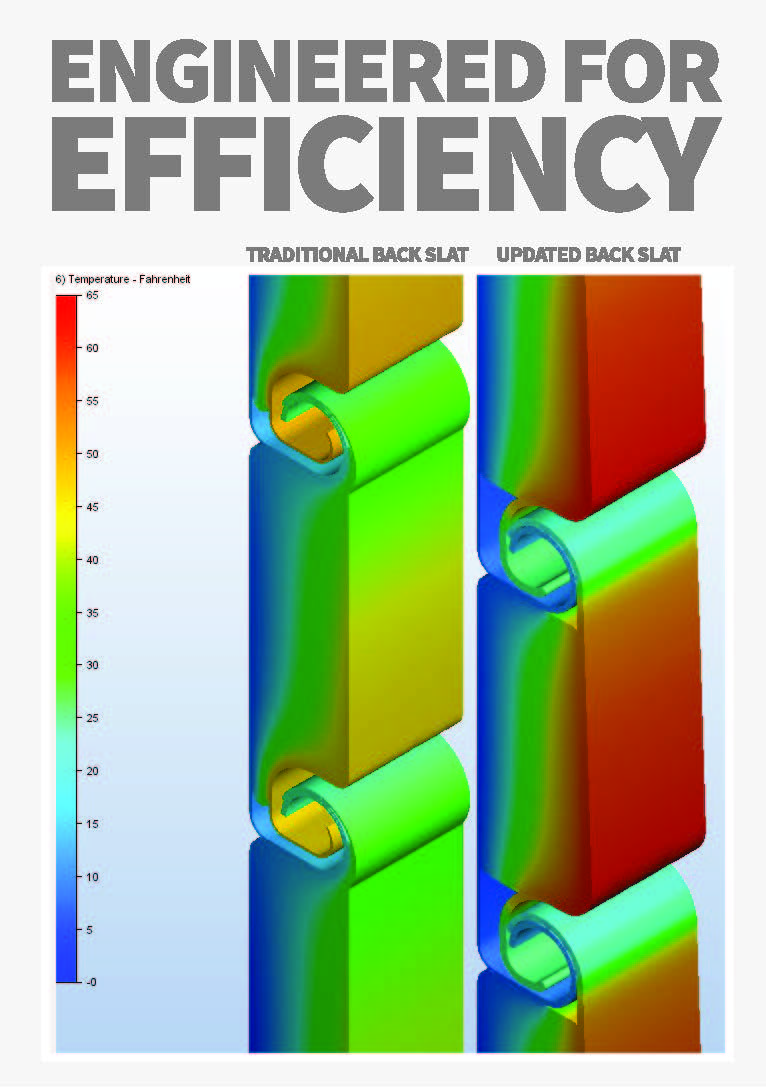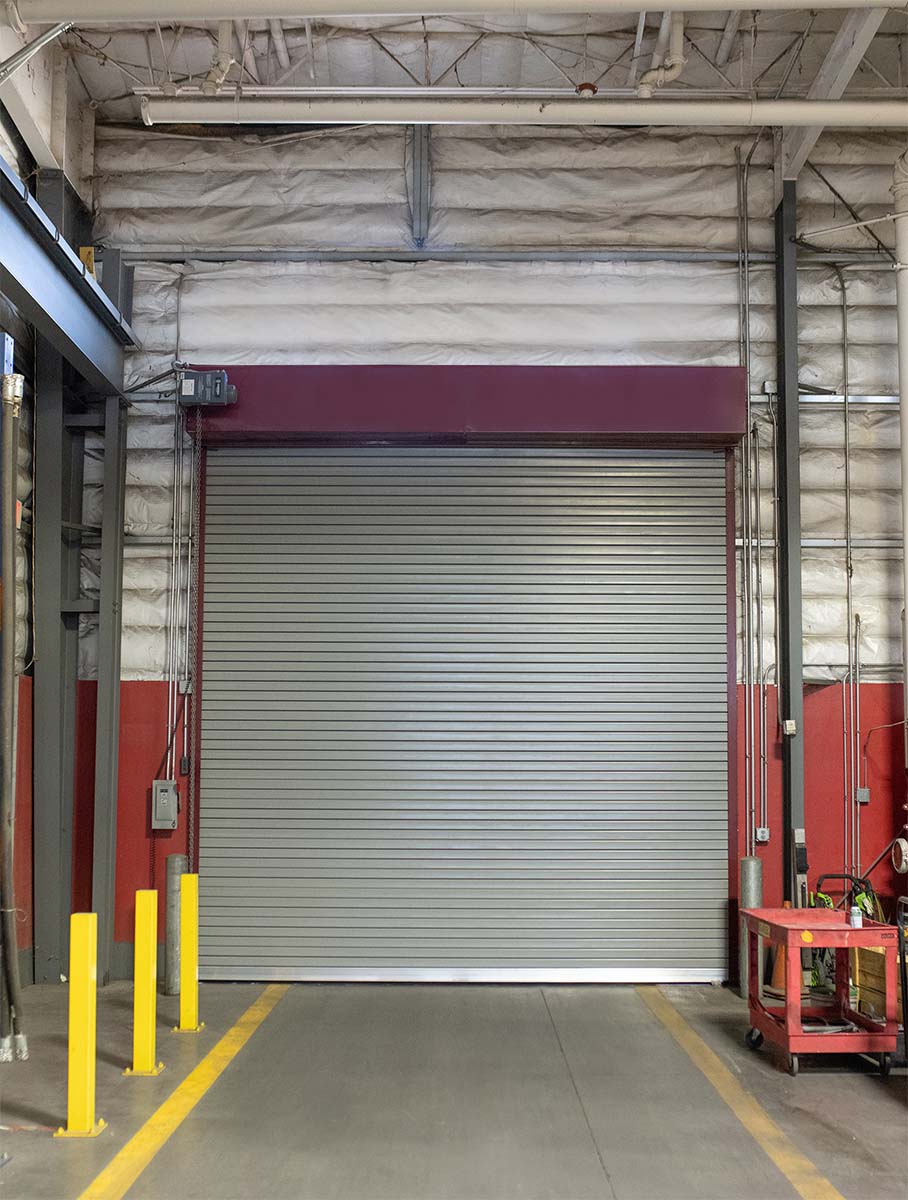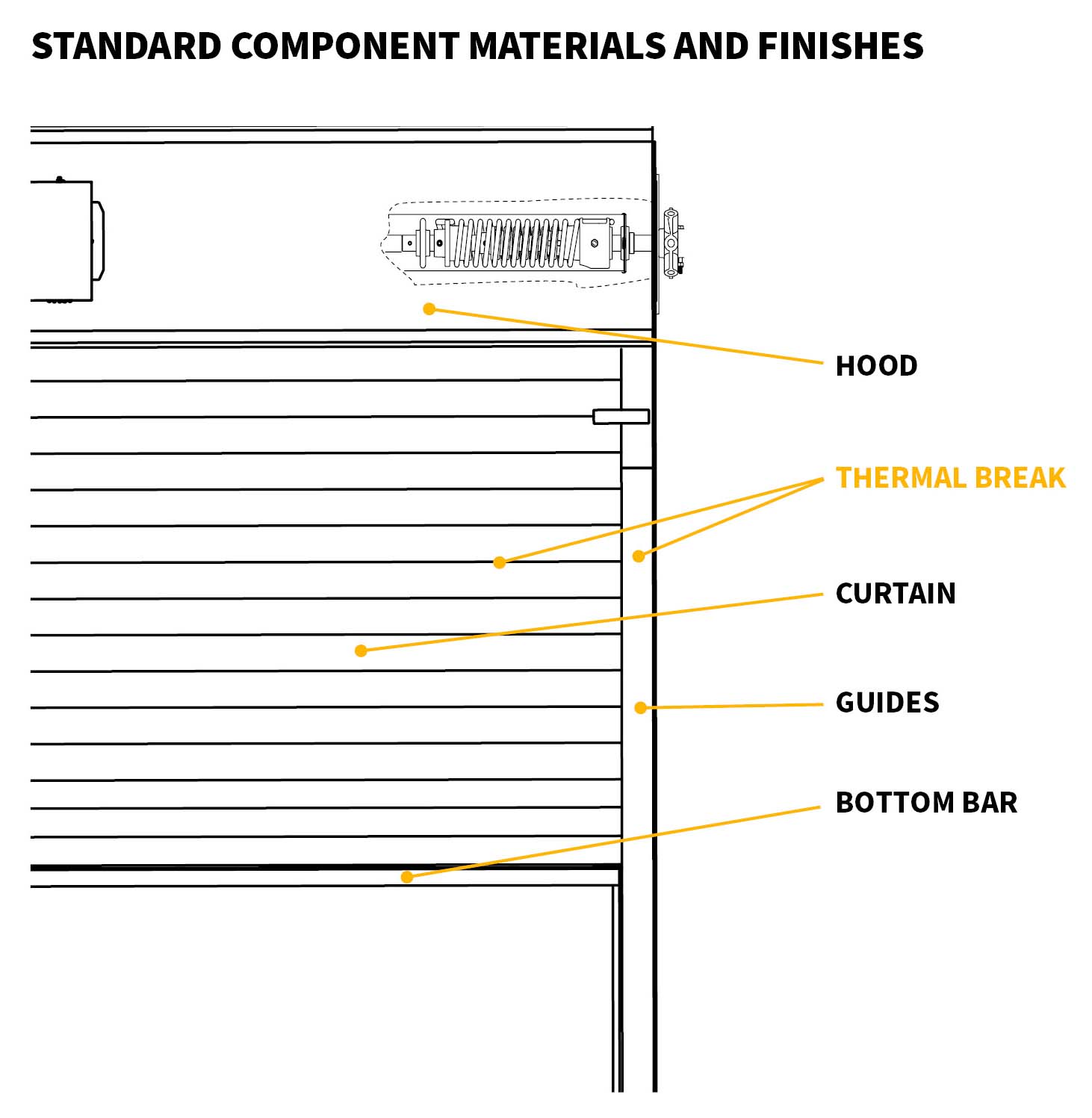
Clopay Corporation is the largest garage door manufacturer in North America. Rolling steel doors and grilles for commercial, industrial, institutional, and retail are sold under the Cornell and Cookson brands.
Breaking the Thermal Bridge: Thermal Breaks on Rolling Steel Doors
See how thermal breaks on rolling steel doors help to prevent heat loss and improve energy efficiency in commercial buildings

More than ever, it’s important to build sustainable spaces to live and work. One important consideration is to ensure that buildings are designed to maintain desired temperatures in conditioned spaces efficiently. Thermal bridging is one of the main reasons why buildings lose heat, especially around industrial rolling doors. Rolling steel doors with thermal breaks are made with materials that minimize thermal transfer and break the thermal bridge, enabling us to take energy-efficient design to its full potential.
Garage doors act as a linear thermal bridge. Since an industrial rolling door is made from conductive metals, like steel or aluminum, and is long and vertical, heat can easily transfer along its length. The perimeter of the door is especially prone to leakage. Uninsulated garage doors create thermal bridges, allowing heat to flow easily in and out of your building, that is unless the door is designed with insulation, seals, and thermal breaks.
Why Thermal Breaks Matter
The benefits of thermal breaks are enormous. They contribute to a building’s energy performance, including the efficiency of heating and cooling systems, reduced energy costs, and the comfort of occupants. These doors are particularly important for high-traffic commercial buildings such as warehouses and institutional applications like school buildings.
With their insulating properties, steel doors with insulation, seals, and thermal breaks help meet air infiltration requirements. Overall, rolling steel doors with thermal breaks are necessary for effectively reducing the amount of energy needed to regulate building temperatures. Also, some may come with additional perks, like a Sound Transmission Class (STC) Rating.
How Are Thermal Breaks Used on Rolling Steel Doors?
Thermal breaks are found in a door’s construction. Design features are used to disrupt the thermal bridge by separating steel and preventing metal-on-metal contact. These doors include less-conductive components and materials, such as CPVC and mineral wool insulation, separating the metal components of the door and breaking the thermal bridge.
Where to Find Thermal Breaks on Rolling Steel Doors
There are many different types of energy-efficient rolling steel doors, and usually, experts like structural engineers, building designers, architects, specifiers, and door professionals determine which is most appropriate for a specific building. Thermal breaks are built into the perimeter (header, guides, and bottom bar) and throughout the curtain of insulated rolling steel doors.
In the Hood
A hood is a protective metal cover attached to the wall above the door opening. The hood shields the rolling mechanism, barrel, and spring assembly from dirt, debris, and weather. Thermally efficient models will have weather stripping or insulation in and around the hood.
Along the Lintel
A lintel seal brush, which is a weather seal with bristles attached to a strip, will be included in some insulated models. A rubber seal sandwiched by a double lintel seal brush is mounted with a clip to the underside of the lintel (top horizontal part) of the rolling door and makes contact with the curtain. This seals the gap between the top of the door and the lintel of the doorway, stopping air from flowing through the top of the door assembly.
In the Individual Slats of the Curtain
The primary moving part of a rolling door, the curtain, is made with interconnected slats. Insulated rolling steel doors are designed with double-wall construction—two sheets of metal separated by insulation. Insulation can either be made of polyurethane, polystyrene, or, in some cases, mineral wool. This double wall construction lends itself to thermal bridging. To address this, some manufacturers add a low-conductivity CPVC material on the interior curtain layer to separate the steel slats’ connection points, thereby breaking the thermal bridge.

Click graphic to enlarge
In the Guides
Guides are an integral part of a rolling steel door assembly. They guide the curtain during operation, keeping the edges of the curtain retained and aligned. Due to its construction, a door’s guide can be a weak point in thermal efficiency if not properly sealed. Specialized insulated rolling steel doors come with thermal breaks that are placed between the wall and the outer angle of the guide assembly. This thick, low-conductive material closes gaps between the inner and outer angles, additionally preventing air infiltration.
In the Bottom Bar
Situated at the base of the curtain, bottom bars reinforce the bottom edge of the door. In thermally efficient models, the bottom bar will be insulated. A rubber or foam seal will also be added. When the door closes, the seal will compress tightly on the surface of the floor to prevent heat transfer and air leakage.
Clopay® Corporation’s Secret to Breaking the Thermal Bridge
Imagine a metal pan on a stove, heating your favorite soup. The metal is great at conducting heat, making sure your soup cooks perfectly. But the handle, which is usually made of plastic or wood, has high thermal resistance and keeps the heat from burning your hand. Thermal breaks work in much the same way to break the thermal bridge.

Photo provided by Cornell.
Clopay® Corporation has developed a rolling steel door that includes everything you need to mitigate thermal bridging in openings. This door easily checks boxes for high-quality and low-conductive materials, enhanced insulation, and structural design.
The Thermiser Max®️ - Low U Door incorporates thermal breaks into the design, with a CPVC backer and thermally broken guides. It’s also third-party tested per DASMA-105, which gives the Thermiser Max – Low U Door an impressively low U-factor of 0.532, the lowest in the rolling door industry. This U-factor translates into notable energy cost savings. In this case, end user savings ranged from $300-$900 per year, depending on the climate zone1 when compared to a standard insulated door.
Video courtesy of Cornell
Insulated rolling steel doors with thermal breaks are a major part of commercial building design and a significant way to stop thermal bridging. For a truly efficient and sustainable building, add insulated rolling steel doors, such as the Thermiser Max – Low U Door, to your building design and energy calculations from the start. These doors put efficiency first and take the guesswork out of creating eco-friendly spaces, which, in the end, saves commercial building owners money.

Image provided by Cornell.
1 Clopay Corporation’s Thermiser Max® - Low U Door. Annual adjusted energy cost savings based on HVAC efficiency for Climate Zone 1 (hot) and Climate Zone 6 (cold) are calculated at $327 and $920, respectively, when compared to a standard insulated door. These calculations are based on a user in a Climate Zone 1 building that is heated or cooled 24 hours per day, an HVAC system operating at 90% efficiency, and an electricity cost of $0.16 per kWH.
By Heather Bender, Director of Commercial Product Marketing
Heather Bender is the director of commercial product marketing at Clopay Corporation, with 18 years of experience in manufacturing and building materials. Excelling in product management, she adeptly handles product inception to commercialization. Her role involves finding unique solutions for building owners and designers, highlighting her strategic and innovative approach to complex industry challenges. Bender can be contacted at hbender@clopay.com.
